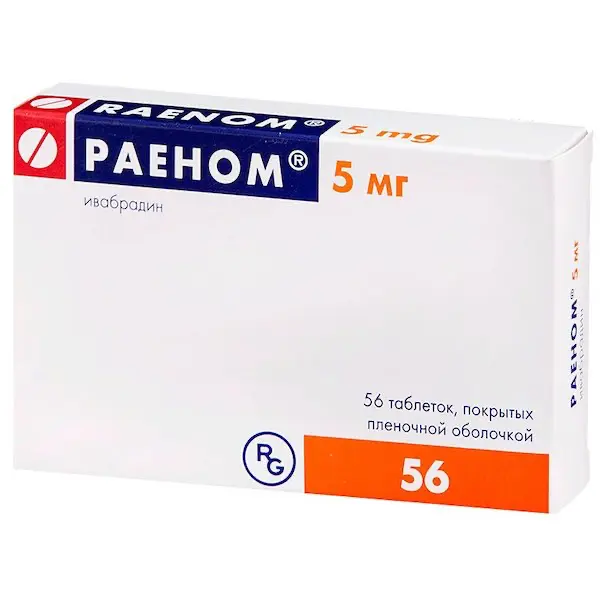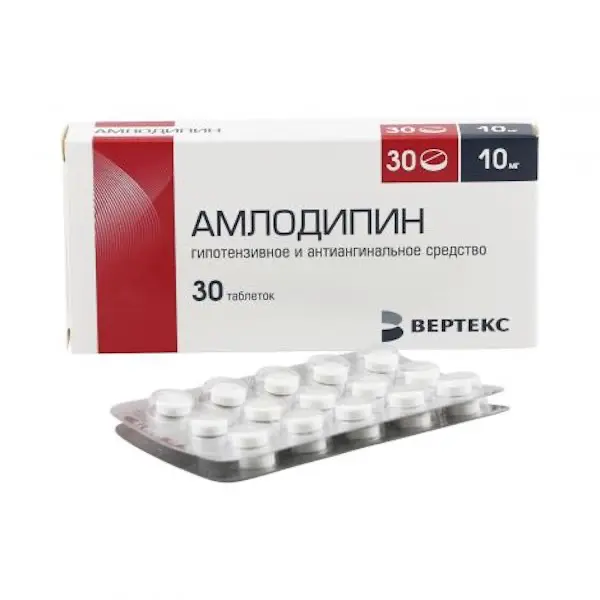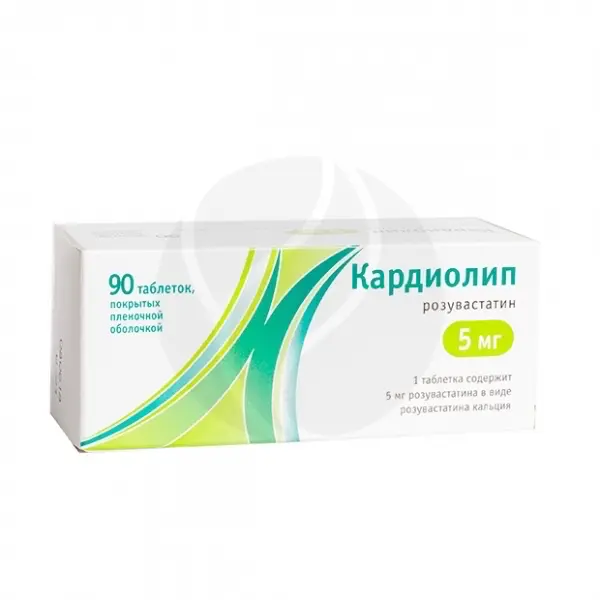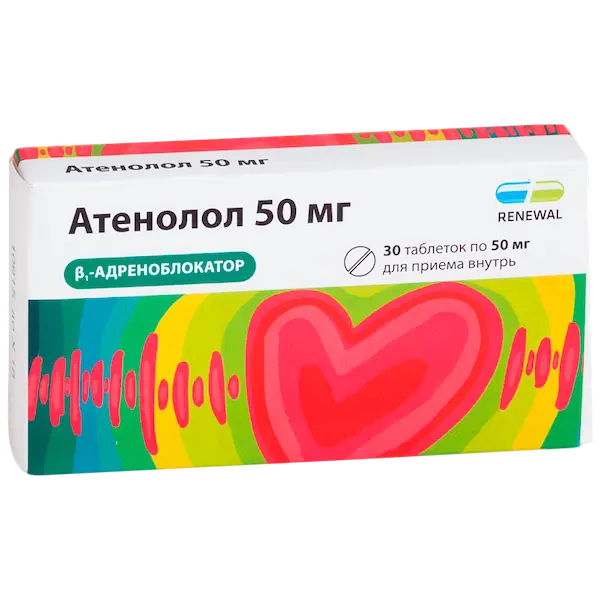Description
Raenom Pharmacodynamics
Ivabradine is a drug that slows the heart rhythm.
The mechanism of action of ivabradine is selective and specific inhibition of If channels of the sinus node, which control spontaneous diastolic depolarization in the sinus node and regulate heart rate (HR). Ivabradine has a selective effect on the sinus node without affecting the timing of impulse conduction along the atrial-atrial, atrial-ventricular and intraventricular conduction pathways, as well as on myocardial contractility and ventricular repolarization. Ivabradine can also interact with retinal Ih channels, similar in structure to //channels of the heart. They are involved in the temporal adaptation mechanisms of the visual perception system by altering the retinal response to bright light stimuli.
Under provocative circumstances (e.g., a sharp change in light intensity in the visual field area), partial inhibition of If channels by ivabradine leads to the phenomenon of changes in light perception (photopsia). Photopsia is characterized by a transient change in brightness in a limited area of the visual field (see section “Side effects”).
The main pharmacological effect of Ivabradia is a dose-dependent decrease in heart rate. We analyzed the dependence of heart rate inhibition on the dose of this medicine with gradual increase of iwabradium dose up to 20 mg 2 times a day and showed a tendency to reach a “plateau” effect (no increase of therapeutic effect with
further increasing the drug dose), which reduces the risk of developing severe bradycardia (HR less than 40 bpm) (see section “Side effects”).
When using the drug in the recommended doses, the degree of heart rate reduction depends on its initial value and is about 10-15 bpm at rest and during physical activity, as a result of which the heart rate and myocardial oxygen demand decrease.
Ivabradine has no effect on vitric conduction, myocardial contractility (no negative inotron effect) and ventricular repolarization. In clinical electrophysiological studies, ivabradine had no effect on the pulse conduction time along the atrial-ventricular or intraventricular conduction pathways, as well as on the corrected QT intervals.
In studies in patients with left ventricular dysfunction (left ventricular ejection fraction (LVEF) 30-45%) it has been shown that ivabradine has no effect on myocardial contractility.
It was found that ivabradine at a dose of 5 mg 2 times a day improved stress test values already after 3-4 weeks of treatment. The efficacy was also confirmed for the dose of 7.5 mg 2 times 15 days. An additional effect of increasing the dose from 5 mg to 7.5 mg 2 times a day was established in a comparative study with atepolol. Exercise time increased by about I minute after 1 month of using ivabradine in a dose of 5 mg 2 times a day, and after an additional 3-month course of taking ivabradine in a dose of 7.5 mg 2 times a day orally, a further increase of 25 seconds in this parameter was noted. The antianginal and anti-ischemic activity of ivabradine was also confirmed in patients aged 65 years and older. The efficacy of ivabradine at doses of 5 mg and 7.5 mg twice daily was observed for all exercise test parameters (total exercise duration, time to limiting angina attack, time to onset of angina attack and time to ST-segment depression by 1 mm) and was accompanied by approximately 70% reduction of angina attack frequency. Administration of ivabradine 2 times a day provided continuous therapeutic efficacy for 24 hours.
In patients taking ivabradine, additional efficacy was shown in all exercise test parameters when added to the maximum dose of atenolol (50 mg) at its therapeutic activity decline (12 hours after oral administration).
No improvement in the efficacy of ivabradine was found when added to the maximum dose of amlodinine at the decline of its therapeutic activity (12 hours after oral administration), while at the maximum activity of amlodinine (3-4 hours after oral administration), additional efficacy of ivabradine was demonstrated.
- The drug Raenom should be taken orally 2 times a day, morning and evening with a meal (see section “Pharmacokinetics”). Decision about therapy start and titration of doses should be taken at regular control of HR, ECG.
- Stable angina pectoris.
- Recommended initial dose is 10 mg per day (1 tablet of 5 mg twice per day) for patients aged less than 75 years old.
- After 3-4 weeks of using the drug, depending on the therapeutic effect, the daily dose may be increased to 15 mg (1 tablet of 7.5 mg twice a day). If during the treatment by Raenom the resting HR falls below 50 BPM or the patient experiences bradycardia-related symptoms (such as dizziness, increased fatigability or marked BP decrease), the drug dose
- of Raenom should be reduced (e.g., to 2.5 mg (5 mg Ug tablets) twice daily). If the HR remains less than 50 bpm or symptoms of marked bradycardia persist after reducing the dose, Raenom* should be discontinued (see section “Precautions for use”),
- If there is no disappearance of angina symptoms within 3 months of therapy, the drug should be discontinued.
- Chronic heart failure
- The recommended starting dose of Raenom is 10 mg per day (1 tablet of 5 mg 2 times per day) for patients aged less than 75 years. Treatment should be started only in patients with stable CHF.
- After two weeks of use the daily dose of Raenom may be increased up to 15 mg (but 1 tablet of 7.5 mg 2 times per day), if resting HR is stable over 60 bpm. If HR is stable less than 50 bpm or in case of bradycardia symptoms, such as dizziness, increased fatigue or arterial hypotension, the dose may be reduced to 2.5 mg (1 tablet of 5 mg) 2 times per day.
- If HR is in the range of 50 to 60 bpm, it is recommended to use Raenom* in a dose of 5 mg 2 times a day. If during therapy, resting HR is consistently less than 50 bpm or if symptoms of marked bradycardia are noted in patients taking the drug at a dose of 5 mg twice daily or 7.5 mg twice daily, the dose of Raenom* should be reduced.
- If patients receiving Raenom® at a dose of 2.5 mg (but Ug 5 mg tablets) 2 times daily or 5 mg 2 times daily have a resting HR steadily greater than 60 bpm, the drug dose may be increased.
- If HR is less than 50 bpm or if the patient still has bradycardia symptoms, the use of Raenom* should be discontinued (see section “Precautions for use”).





